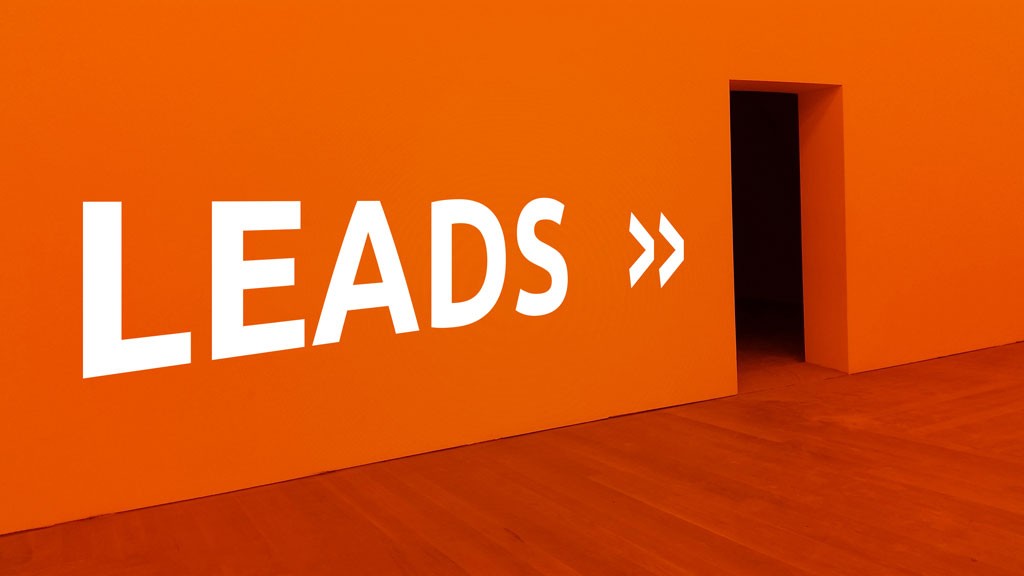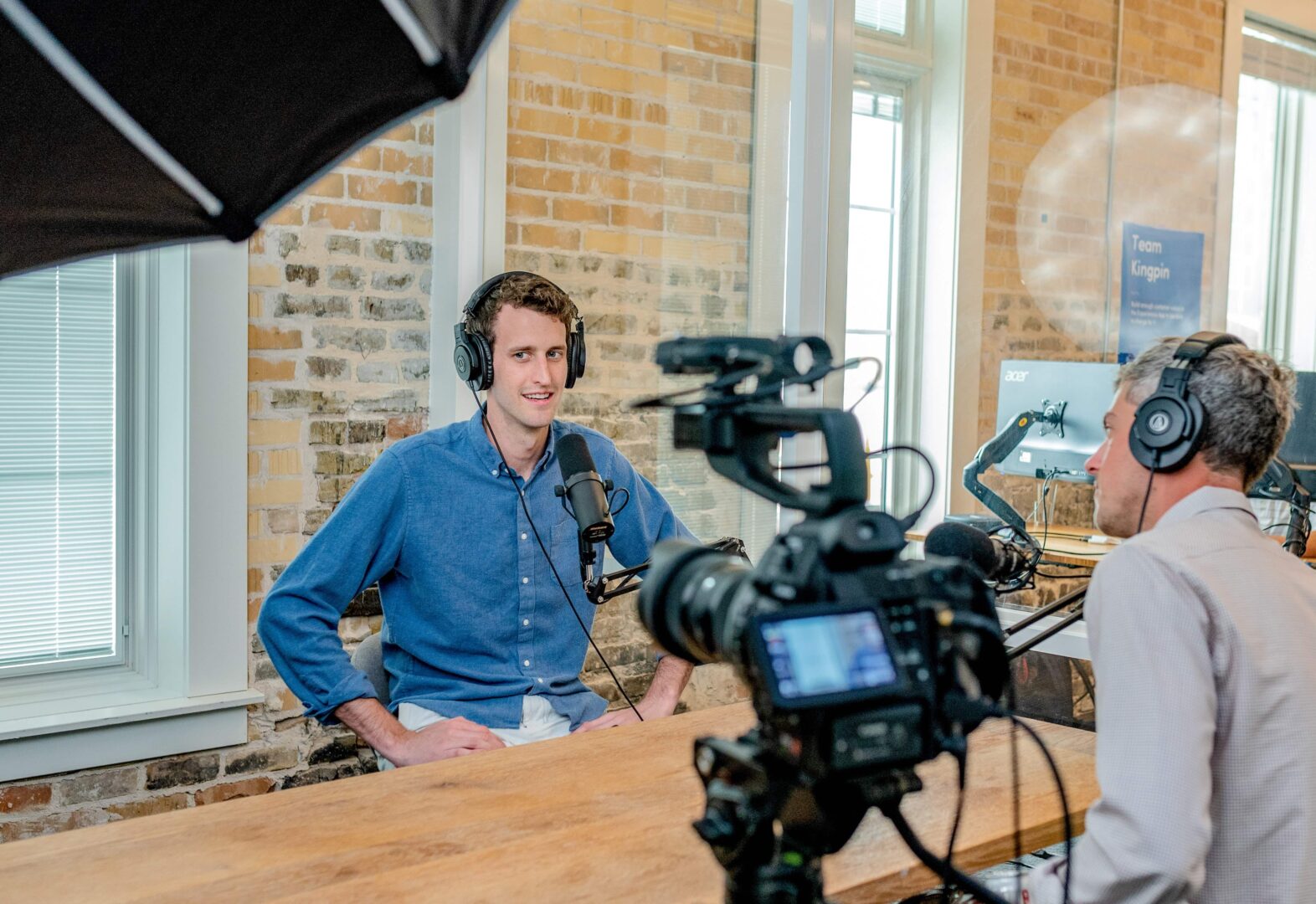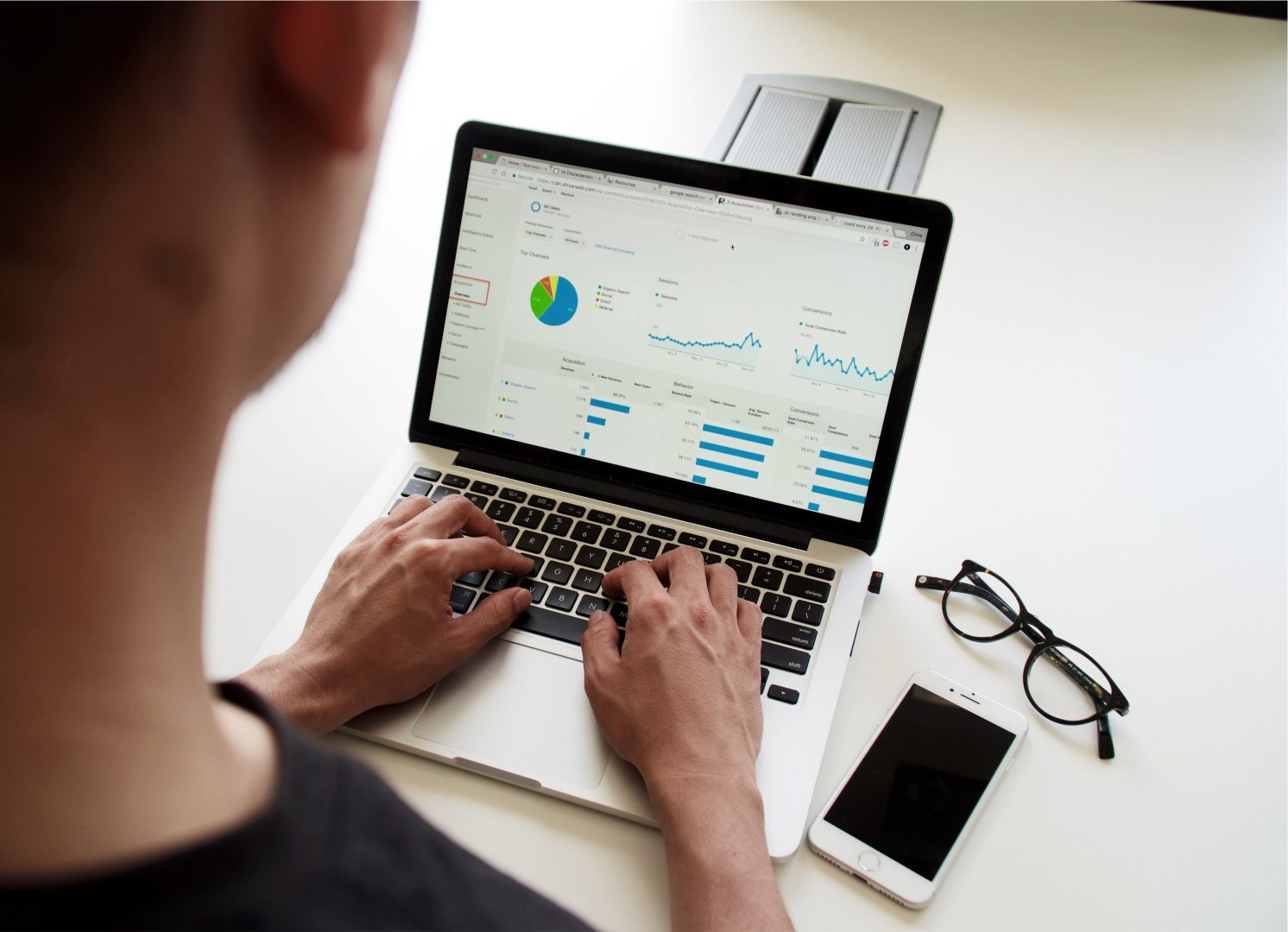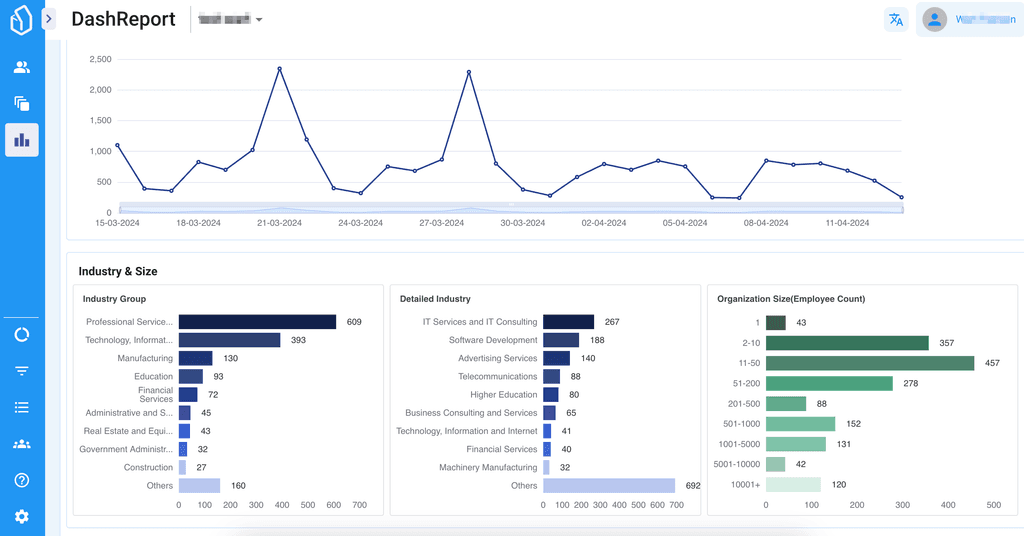Lead Generation|Marketing
Are high converting pages destroying your sales?
Are high converting pages destroying your sales?
2016-10-19
Lead Generation|Marketing
Are high converting pages destroying your sales?
2016-10-19
Lead Generation|Marketing
Are high converting pages destroying your sales?
2016-10-19
Table of Contents
Auto Generated TOC
Auto Generated TOC
Auto Generated TOC
Auto Generated TOC
Seeing your pages convert at a high rate is always exciting. There’s an unusual thrill in seeing your work appear to pay off. But, what if you your high converting pages are actually hurting your business? It’s a potentially odd question, but it’s worth considering if all of those “10 ways to make high converting landing pages” blog posts are actually during your business more harm over time than good.In this post, we’re going to challenge the notion that high converting landing pages are good. We want to you to consider that, over time, they may actually being hurting your business.It’s a unique question, right? You’d think that boosting conversions by 100% or offering discount codes to cause a spike in sale would be good. Our goal is to examine how, while good in the short-term, high converting pages may be setting your business up to fail in the long-term.A quick example of a discount backfiring is what happened to the clothing store chain JCPenney. JCPenney ALWAYS had sales going on, which caused customers to always expect discounts. One day, JCPenney decided to stop offering discounts. This caused sales to plummet. Sales plummeted because people expected prices to be lower all of the time. Since this shift in pricing, JCPenney has been going through an immense amount of financial trouble-- from store closing to rumors of an impending bankruptcy.
What causes bad high converting landing pages?
Bad high converting landing pages start with targeting the wrong people. This is a simple idea, but it’s often forgotten by marketing and sales team.To reduce the amount of bad traffic that you get, you should do two of the following things:
Get very focused on who your target audience is.
Find the customers of yours that like you most, and create content that you know they’ll strongly enjoy and likely want to share.
Author and entrepreneur Tim Ferriss had some powerful words on why lower converting landing pages are sometimes better to use than high converting pages:“We’ll do a bunch of testing. And here are the three top performing pages.[But] the best performing page might have some characteristics that seem off…Maybe it’s a few too many exclamation points or a few too many caps that give me a slight feeling of the marketing heebie-jeebies.And I’m starting to think, ‘Next thing I know, this thing is going to have yellow highlights and be 30 pages long.’Even if that page performs twice as well as the one below it I intentionally choose the second one.Why?Because it’s not just about maximizing conversions. Ask yourself – who do you want to convert?The question I ask myself is, ‘If I only knew five hedge fund managers who each have billions of dollars and are extremely brilliant, would they land on this page and go, “Ugh” and bounce?’If the answer is yes, then that’s not a highly converting page for me. I care more about those five people than a blanket statement of high conversions and not qualifying and getting as many people as possible.”This all sounds great, but you’re probably asking yourself how you’ll know that you’ve attracted the right people.This all sounds great, but you’re probably asking yourself how you’ll know that you’ve attracted the right people. You’ll know if you’re attracting the right people to convert on your page if the amount of people who convert on your page eventually turn into paying customers. If people are starting free trials, downloading ebooks, and more, and never converting into paid customers you are focusing your efforts on the wrong people.You can look at your earnings per lead instead of cost per lead to understand if you're attracting the correct people to your landing pages.
Digging into your revenue per lead.
“I run an ad agency and one of my clients was not getting a good ROI like our other clients.When I looked at their lead gen page, I noticed it created a lot of curiosity but didn’t qualify the lead very well.I asked them to split test a page our company made for them against their’s [sic].30 days later they wrote me to tell me their page was the winner. Their page had a 35% conversion rate while mine only had a 24% conversion rate.I quickly wrote back and said, “Can you check revenue stats for each page?”They replied, “Ok nevermind your page crushed ours in sales. We only made $4,500 from our page, but leads who came through your page spent $13,000!”Source: Why Your Conversion Rate Is a Liar & a Thief
At the end of the day when you're examining your landing pages, you need to think about how well you are spend your time attracting quality traffic to your landing pages. The quality versus quantity debate is always challenging when it comes to marketing and tracking metrics-- if you can hit the point where you’re getting a high quantity of quality website traffic, your business will blossom.
Seeing your pages convert at a high rate is always exciting. There’s an unusual thrill in seeing your work appear to pay off. But, what if you your high converting pages are actually hurting your business? It’s a potentially odd question, but it’s worth considering if all of those “10 ways to make high converting landing pages” blog posts are actually during your business more harm over time than good.In this post, we’re going to challenge the notion that high converting landing pages are good. We want to you to consider that, over time, they may actually being hurting your business.It’s a unique question, right? You’d think that boosting conversions by 100% or offering discount codes to cause a spike in sale would be good. Our goal is to examine how, while good in the short-term, high converting pages may be setting your business up to fail in the long-term.A quick example of a discount backfiring is what happened to the clothing store chain JCPenney. JCPenney ALWAYS had sales going on, which caused customers to always expect discounts. One day, JCPenney decided to stop offering discounts. This caused sales to plummet. Sales plummeted because people expected prices to be lower all of the time. Since this shift in pricing, JCPenney has been going through an immense amount of financial trouble-- from store closing to rumors of an impending bankruptcy.
What causes bad high converting landing pages?
Bad high converting landing pages start with targeting the wrong people. This is a simple idea, but it’s often forgotten by marketing and sales team.To reduce the amount of bad traffic that you get, you should do two of the following things:
Get very focused on who your target audience is.
Find the customers of yours that like you most, and create content that you know they’ll strongly enjoy and likely want to share.
Author and entrepreneur Tim Ferriss had some powerful words on why lower converting landing pages are sometimes better to use than high converting pages:“We’ll do a bunch of testing. And here are the three top performing pages.[But] the best performing page might have some characteristics that seem off…Maybe it’s a few too many exclamation points or a few too many caps that give me a slight feeling of the marketing heebie-jeebies.And I’m starting to think, ‘Next thing I know, this thing is going to have yellow highlights and be 30 pages long.’Even if that page performs twice as well as the one below it I intentionally choose the second one.Why?Because it’s not just about maximizing conversions. Ask yourself – who do you want to convert?The question I ask myself is, ‘If I only knew five hedge fund managers who each have billions of dollars and are extremely brilliant, would they land on this page and go, “Ugh” and bounce?’If the answer is yes, then that’s not a highly converting page for me. I care more about those five people than a blanket statement of high conversions and not qualifying and getting as many people as possible.”This all sounds great, but you’re probably asking yourself how you’ll know that you’ve attracted the right people.This all sounds great, but you’re probably asking yourself how you’ll know that you’ve attracted the right people. You’ll know if you’re attracting the right people to convert on your page if the amount of people who convert on your page eventually turn into paying customers. If people are starting free trials, downloading ebooks, and more, and never converting into paid customers you are focusing your efforts on the wrong people.You can look at your earnings per lead instead of cost per lead to understand if you're attracting the correct people to your landing pages.
Digging into your revenue per lead.
“I run an ad agency and one of my clients was not getting a good ROI like our other clients.When I looked at their lead gen page, I noticed it created a lot of curiosity but didn’t qualify the lead very well.I asked them to split test a page our company made for them against their’s [sic].30 days later they wrote me to tell me their page was the winner. Their page had a 35% conversion rate while mine only had a 24% conversion rate.I quickly wrote back and said, “Can you check revenue stats for each page?”They replied, “Ok nevermind your page crushed ours in sales. We only made $4,500 from our page, but leads who came through your page spent $13,000!”Source: Why Your Conversion Rate Is a Liar & a Thief
At the end of the day when you're examining your landing pages, you need to think about how well you are spend your time attracting quality traffic to your landing pages. The quality versus quantity debate is always challenging when it comes to marketing and tracking metrics-- if you can hit the point where you’re getting a high quantity of quality website traffic, your business will blossom.
Seeing your pages convert at a high rate is always exciting. There’s an unusual thrill in seeing your work appear to pay off. But, what if you your high converting pages are actually hurting your business? It’s a potentially odd question, but it’s worth considering if all of those “10 ways to make high converting landing pages” blog posts are actually during your business more harm over time than good.In this post, we’re going to challenge the notion that high converting landing pages are good. We want to you to consider that, over time, they may actually being hurting your business.It’s a unique question, right? You’d think that boosting conversions by 100% or offering discount codes to cause a spike in sale would be good. Our goal is to examine how, while good in the short-term, high converting pages may be setting your business up to fail in the long-term.A quick example of a discount backfiring is what happened to the clothing store chain JCPenney. JCPenney ALWAYS had sales going on, which caused customers to always expect discounts. One day, JCPenney decided to stop offering discounts. This caused sales to plummet. Sales plummeted because people expected prices to be lower all of the time. Since this shift in pricing, JCPenney has been going through an immense amount of financial trouble-- from store closing to rumors of an impending bankruptcy.
What causes bad high converting landing pages?
Bad high converting landing pages start with targeting the wrong people. This is a simple idea, but it’s often forgotten by marketing and sales team.To reduce the amount of bad traffic that you get, you should do two of the following things:
Get very focused on who your target audience is.
Find the customers of yours that like you most, and create content that you know they’ll strongly enjoy and likely want to share.
Author and entrepreneur Tim Ferriss had some powerful words on why lower converting landing pages are sometimes better to use than high converting pages:“We’ll do a bunch of testing. And here are the three top performing pages.[But] the best performing page might have some characteristics that seem off…Maybe it’s a few too many exclamation points or a few too many caps that give me a slight feeling of the marketing heebie-jeebies.And I’m starting to think, ‘Next thing I know, this thing is going to have yellow highlights and be 30 pages long.’Even if that page performs twice as well as the one below it I intentionally choose the second one.Why?Because it’s not just about maximizing conversions. Ask yourself – who do you want to convert?The question I ask myself is, ‘If I only knew five hedge fund managers who each have billions of dollars and are extremely brilliant, would they land on this page and go, “Ugh” and bounce?’If the answer is yes, then that’s not a highly converting page for me. I care more about those five people than a blanket statement of high conversions and not qualifying and getting as many people as possible.”This all sounds great, but you’re probably asking yourself how you’ll know that you’ve attracted the right people.This all sounds great, but you’re probably asking yourself how you’ll know that you’ve attracted the right people. You’ll know if you’re attracting the right people to convert on your page if the amount of people who convert on your page eventually turn into paying customers. If people are starting free trials, downloading ebooks, and more, and never converting into paid customers you are focusing your efforts on the wrong people.You can look at your earnings per lead instead of cost per lead to understand if you're attracting the correct people to your landing pages.
Digging into your revenue per lead.
“I run an ad agency and one of my clients was not getting a good ROI like our other clients.When I looked at their lead gen page, I noticed it created a lot of curiosity but didn’t qualify the lead very well.I asked them to split test a page our company made for them against their’s [sic].30 days later they wrote me to tell me their page was the winner. Their page had a 35% conversion rate while mine only had a 24% conversion rate.I quickly wrote back and said, “Can you check revenue stats for each page?”They replied, “Ok nevermind your page crushed ours in sales. We only made $4,500 from our page, but leads who came through your page spent $13,000!”Source: Why Your Conversion Rate Is a Liar & a Thief
At the end of the day when you're examining your landing pages, you need to think about how well you are spend your time attracting quality traffic to your landing pages. The quality versus quantity debate is always challenging when it comes to marketing and tracking metrics-- if you can hit the point where you’re getting a high quantity of quality website traffic, your business will blossom.
Seeing your pages convert at a high rate is always exciting. There’s an unusual thrill in seeing your work appear to pay off. But, what if you your high converting pages are actually hurting your business? It’s a potentially odd question, but it’s worth considering if all of those “10 ways to make high converting landing pages” blog posts are actually during your business more harm over time than good.In this post, we’re going to challenge the notion that high converting landing pages are good. We want to you to consider that, over time, they may actually being hurting your business.It’s a unique question, right? You’d think that boosting conversions by 100% or offering discount codes to cause a spike in sale would be good. Our goal is to examine how, while good in the short-term, high converting pages may be setting your business up to fail in the long-term.A quick example of a discount backfiring is what happened to the clothing store chain JCPenney. JCPenney ALWAYS had sales going on, which caused customers to always expect discounts. One day, JCPenney decided to stop offering discounts. This caused sales to plummet. Sales plummeted because people expected prices to be lower all of the time. Since this shift in pricing, JCPenney has been going through an immense amount of financial trouble-- from store closing to rumors of an impending bankruptcy.
What causes bad high converting landing pages?
Bad high converting landing pages start with targeting the wrong people. This is a simple idea, but it’s often forgotten by marketing and sales team.To reduce the amount of bad traffic that you get, you should do two of the following things:
Get very focused on who your target audience is.
Find the customers of yours that like you most, and create content that you know they’ll strongly enjoy and likely want to share.
Author and entrepreneur Tim Ferriss had some powerful words on why lower converting landing pages are sometimes better to use than high converting pages:“We’ll do a bunch of testing. And here are the three top performing pages.[But] the best performing page might have some characteristics that seem off…Maybe it’s a few too many exclamation points or a few too many caps that give me a slight feeling of the marketing heebie-jeebies.And I’m starting to think, ‘Next thing I know, this thing is going to have yellow highlights and be 30 pages long.’Even if that page performs twice as well as the one below it I intentionally choose the second one.Why?Because it’s not just about maximizing conversions. Ask yourself – who do you want to convert?The question I ask myself is, ‘If I only knew five hedge fund managers who each have billions of dollars and are extremely brilliant, would they land on this page and go, “Ugh” and bounce?’If the answer is yes, then that’s not a highly converting page for me. I care more about those five people than a blanket statement of high conversions and not qualifying and getting as many people as possible.”This all sounds great, but you’re probably asking yourself how you’ll know that you’ve attracted the right people.This all sounds great, but you’re probably asking yourself how you’ll know that you’ve attracted the right people. You’ll know if you’re attracting the right people to convert on your page if the amount of people who convert on your page eventually turn into paying customers. If people are starting free trials, downloading ebooks, and more, and never converting into paid customers you are focusing your efforts on the wrong people.You can look at your earnings per lead instead of cost per lead to understand if you're attracting the correct people to your landing pages.
Digging into your revenue per lead.
“I run an ad agency and one of my clients was not getting a good ROI like our other clients.When I looked at their lead gen page, I noticed it created a lot of curiosity but didn’t qualify the lead very well.I asked them to split test a page our company made for them against their’s [sic].30 days later they wrote me to tell me their page was the winner. Their page had a 35% conversion rate while mine only had a 24% conversion rate.I quickly wrote back and said, “Can you check revenue stats for each page?”They replied, “Ok nevermind your page crushed ours in sales. We only made $4,500 from our page, but leads who came through your page spent $13,000!”Source: Why Your Conversion Rate Is a Liar & a Thief
At the end of the day when you're examining your landing pages, you need to think about how well you are spend your time attracting quality traffic to your landing pages. The quality versus quantity debate is always challenging when it comes to marketing and tracking metrics-- if you can hit the point where you’re getting a high quantity of quality website traffic, your business will blossom.

Generate More Qualified Leads with LeadBoxer
Create a (free) account or get a demo and find out how we can help you.

Generate More Qualified Leads with LeadBoxer
Create a (free) account or get a demo and find out how we can help you.

Generate More Qualified Leads with LeadBoxer
Create a (free) account or get a demo and find out how we can help you.

Generate More Qualified Leads with LeadBoxer
Create a (free) account or get a demo and find out how we can help you.
Get Started with LeadBoxer
LeadBoxer can help you quickly generate more leads
Get more insight into your online audience and their behaviour, and turn this data into actual opportunities.
Start Now!
Get Started with LeadBoxer
LeadBoxer can help you quickly generate more leads
Get more insight into your online audience and their behaviour, and turn this data into actual opportunities.
Start Now!
Get Started with LeadBoxer
LeadBoxer can help you quickly generate more leads
Get more insight into your online audience and their behaviour, and turn this data into actual opportunities.
Start Now!
Get Started with LeadBoxer
LeadBoxer can help you quickly generate more leads
Get more insight into your online audience and their behaviour, and turn this data into actual opportunities.
Start Now!
Other content in category
Lead Generation|Marketing



Harnessing the Power of Video Marketing for B2B Lead Generation



How to Develop and Implement Your First Successful SEO Campaign



B2B Lead Strategy and Marketing Alignment



Using Digital Marketing Channels for Lead Generation



How to make LinkedIn ads that actually work

Supercharge your marketing results with LeadBoxer!
Analyze campaigns and traffic, segement by industry, drilldown on company size and filter by location. See your Top pages, top accounts, and many other metrics.


Supercharge your marketing results with LeadBoxer!
Analyze campaigns and traffic, segement by industry, drilldown on company size and filter by location. See your Top pages, top accounts, and many other metrics.


Supercharge your marketing results with LeadBoxer!
Analyze campaigns and traffic, segement by industry, drilldown on company size and filter by location. See your Top pages, top accounts, and many other metrics.


Supercharge your marketing results with LeadBoxer!
Analyze campaigns and traffic, segement by industry, drilldown on company size and filter by location. See your Top pages, top accounts, and many other metrics.


